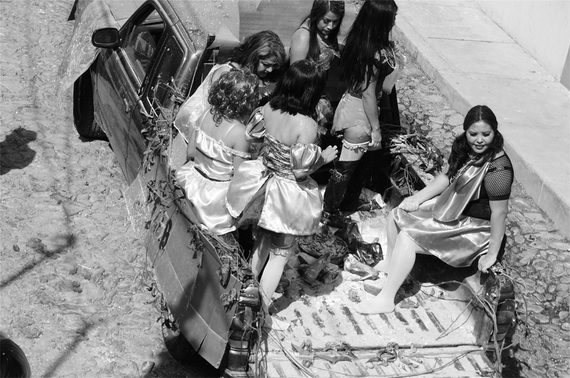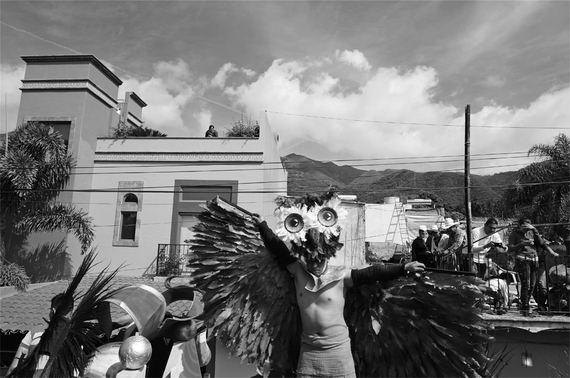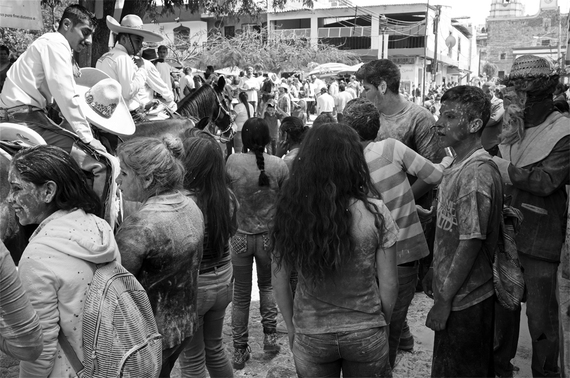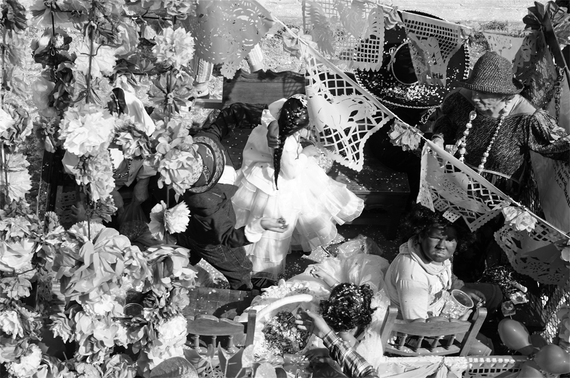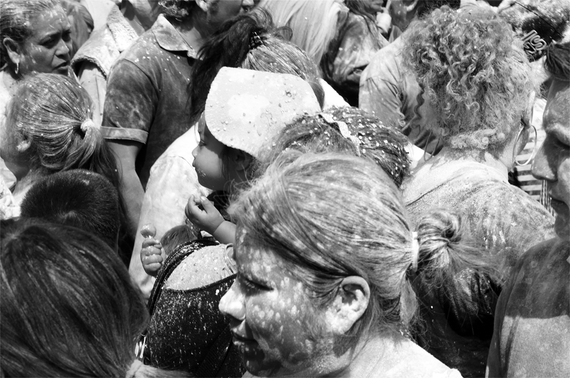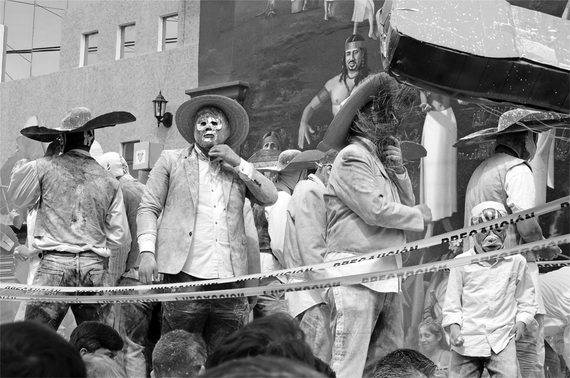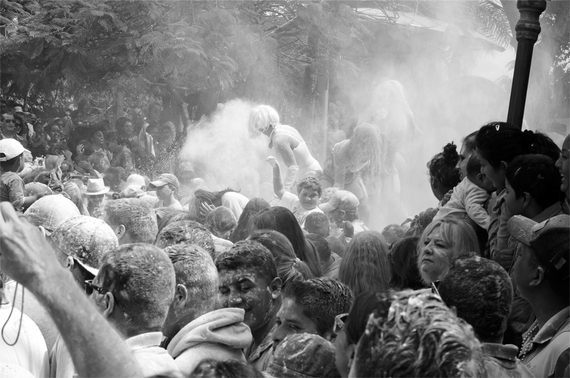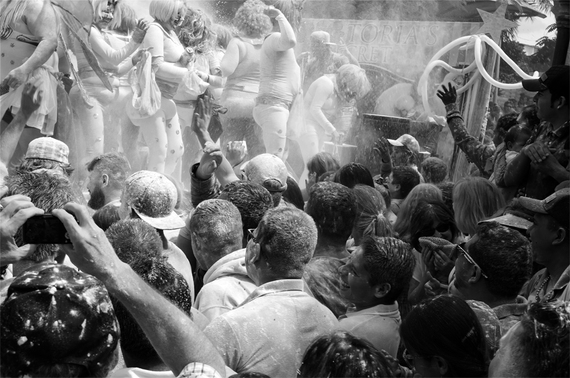Sending anyone into a carnival with a camera and asking for good photos is kind of like sending someone to Canada to find snow. It's not a hard job. The setting is naturally rich with photographic opportunities. And yet, there is something about Christopher's work that caught my eye. Perhaps it is his choice of monochrome for a scene we know is brimming with color, perhaps it is keen sense of the decisive moment. Regardless, these photographs speak to me in a way that a very pretty colorful shot of a carnival would not. Beyond this, the "where's Waldo" feeling of these often cluttered frames is masterfully executed and busies the eye, keeping us glued to the image for several minutes - no small feat for a photographer.
Here is Christopher Healey in his own words:
My first Fat Tuesday happened in Ajijic--a quiet, conservative village in the mountains of western Mexico. I am still unsure if my Mardi Gras experience there was similar to others elsewhere. Like many that day, I was at first witnessing the proceedings safely perched from above the street. The camera and I were mere viewers, detached from the strange procession below.
However, we were soon drawn into participation as copious amounts of flour were flung at the spectators by the performers. They also possessed eggshells, painted gold and filled with confetti, that they launched at those of us on balconies and rooftops. The resulting lumps, sprays, and clouds of dust, lent themselves very well to black and white photography. It gave a sort of mythical and sometimes statuesque look to the multitude of onlookers.
I came to realize this parade was very much a mix of ancient and modern Mexico. The young people of this village seemed to wholeheartedly embrace this tradition, undoubtedly one established by their parents and grandparents. Others did not look so impressed. The crowds become as interesting a subject as anything that day.
Later, we descended into the central square and made our way from the outside to the inside. Once immersed, I could feel and see the different dynamics of this spectacle.
Young men in paper mâché masks and shoddy clothes, including some in dresses and wigs, assaulted bystanders with handfuls of flour. Aztec imagery, Greek mythology, Mexican wrestlers, beauty queens, and more than one flotilla of riotous men in drag, rumbled through the scene. Finally, the vaqueros came, dignified and calm men on horseback, aloof from the pageant of powder surrounding them.
This sequence of photos can be described as a narrative of my bewilderment and discovery. The camera and I are embedded within a cultural act, which is somewhat familiar, but also hopelessly lost in translation. Some of the imagery was, in fact, disturbing.
I can't help but think about how utterly alarming throwing around unidentified white powder in public would be in Canada or the United States.
This experience was indeed magical, however. Being conspicuous - being a tourist - did not matter in this upside down world. I was free to observe and to participate.
Artistically, compositions that explore the dynamics of crowds in public spaces, centred on ceremony, have been an emerging interest for me. Formal issues relating to classical art, the sociological gaze within a post-colonial framework (in particular D.H. Lawrence's problematic and revealing Mornings in Mexico) as well as a critical interest in Mikhail Bakhtin's theories of the 'Carnivalesque', are reflected in the choices comprising this documentary series.
Christopher Healey is an artist and cultural worker formerly based in Toronto, Canada. Chris is now traveling and creating a street photography series across North America. Follow Christopher on Twitter or through his website.
Michael Ernest Sweet is a Canadian educator, writer and photographer. He divides his time between Montreal and New York City. If you are interested in proposing a blog feature contact him through his website.



